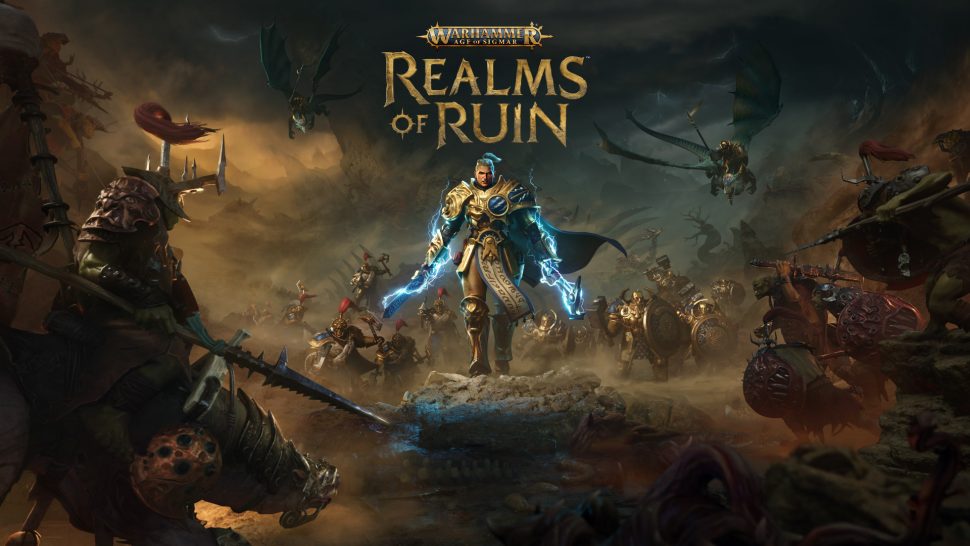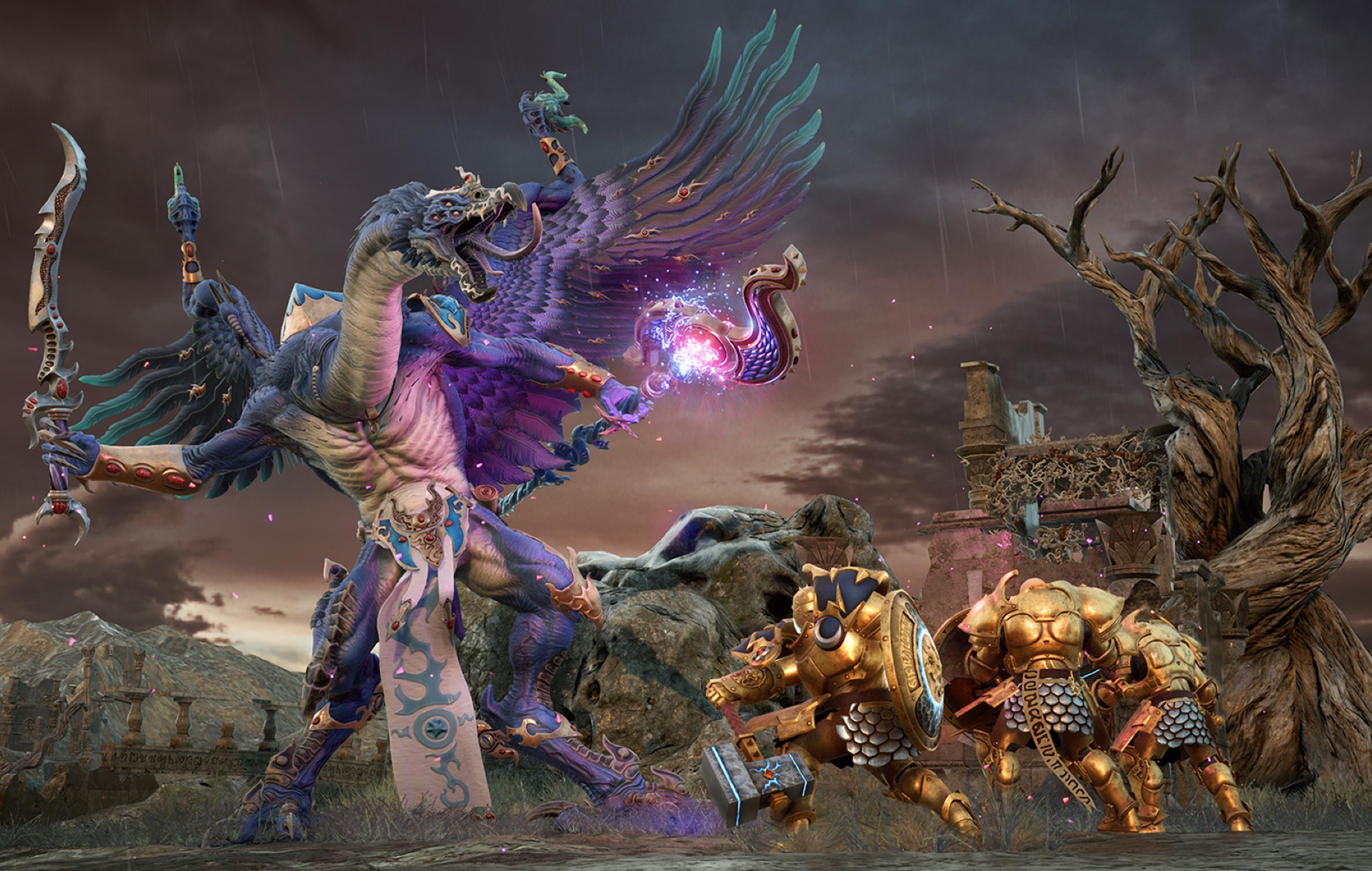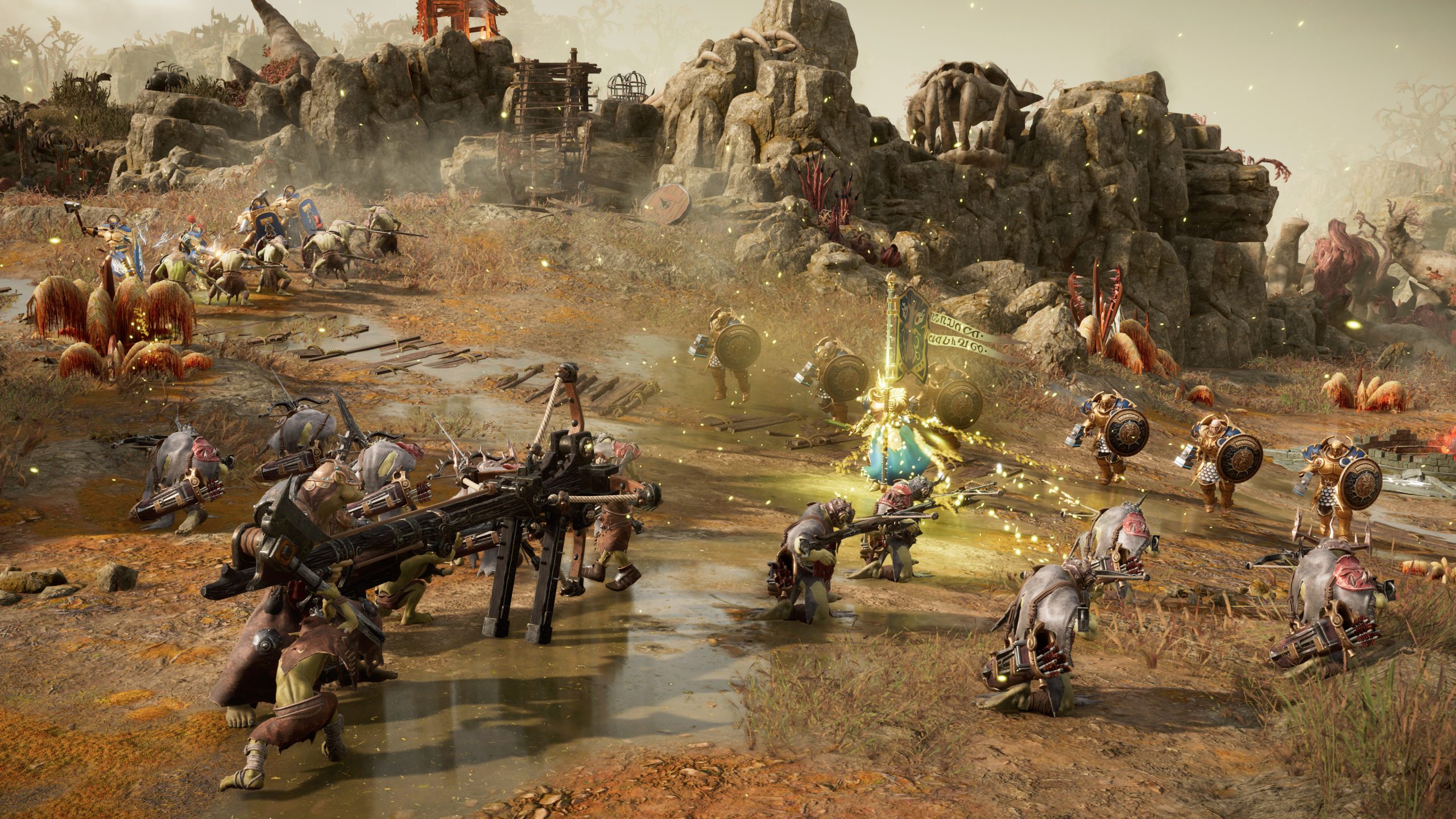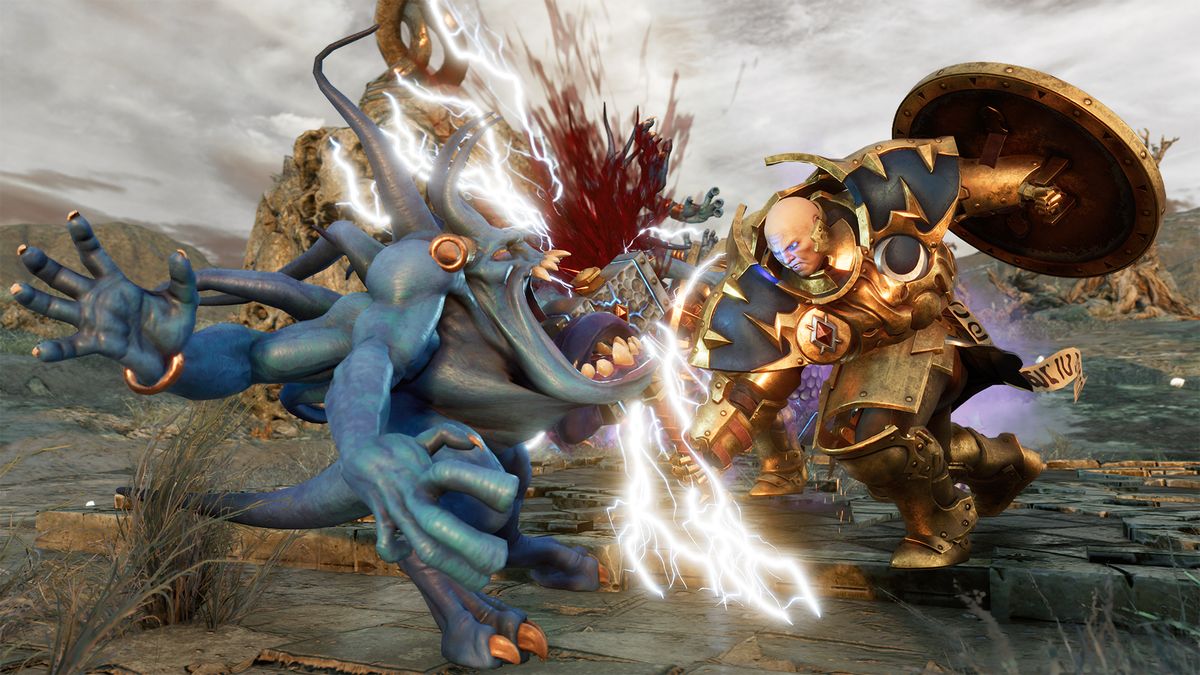Warhammer Age of Sigmar: Realms of Ruin is *almost* the RTS that the Imperium has been waiting for
I must admit that I’ve lost interest in Warhammer over the past ten or fifteen years — mainly because the rank-and-file gameplay of “classic” Warhammer Fantasy was more my cup of tea than the squad-based skirmishes that have replaced it. That said, I love the lore, the miniatures and the mechanics just as much as ever, and so when I heard about Warhammer Age of Sigmar: Realms of Ruin, I just had to get my hands on it.
Warhammer Age of Sigmar: Realms of Ruin takes place in the realm of Ghur — also known as the Realm of Beasts — and places its focus on a small group of Stormcast Eternals who are charged with the defence of their bastion city, Harkanibus. Led by Lord-Celestant Sigrun and a small number of powerful allies, the forces of good press deep into Ghur in search of a powerful artefact, but all is not as it seems — and Orruk’s Nighthaunt and Chaos are all out to stop them.

The first thing you’ll notice about Warhammer Age of Sigmar: Realms of Ruin is how big a production it feels. The cut scenes are lengthy, exceptionally well made and feature fantastic voice acting matched to properly synchronised movements and facial expressions. The story is classic Black Library nonsense, but if you have even a passing interest in Warhammer Age of Sigmar lore, you’ll feel incredibly immersed from the get-go.
Whilst Warhammer Age of Sigmar: Realms of Ruin is definitely real real-time strategy, it takes place on a tactical scale. Individual units act alone, whilst almost every other unit will arrive in a squad of four or five “models” to use an appropriate phrase given the subject matter. Every unit has one or more very specific abilities, and except heroes, each unit fits into one of three camps — offensive, defensive and ranged.

A fairly standard rock-paper-scissors maintains this balance, with ranged units struggling to damage offensive units which close distance rapidly, offensive units less effective against defensive ones and defensive units too slow to deal with ranged units effectively. Heroes are exempt from this because they can go toe-to-toe with any regular troop, but also because their abilities are game-changing and varied enough to provide options for most situations.
I also make the point about Warhammer Age of Sigmar: Realms of Ruin being a tactical game because very few (if any) missions allow the player to remain still. Mission variety is a strong point for Warhammer Age of Sigmar: Realms of Ruin, and more often than not you’ll need to strike out quickly to take control points, destroy particular foes, or otherwise interact with specific mission objectives.

Imagine these control points as quite similar to those in Company of Heroes and you won’t be far from the truth. Some provide Command points and others Realmstone, which together form the resources needed to build and upgrade troops and control points, as well as in many cases to activate specific unit abilities. All control points can be upgraded one or more times, though I’ll admit that one of my negative thoughts about Warhammer Age of Sigmar: Realms of Ruin is how unclear the game is about this, and how indistinct each build path feels compared to each other.
As the player explores the map, it becomes clear that the control system is well-optimised for console play. The default control mechanism encourages players to group units together, and the default camera mode will lock on to one unit and allow the player to trace a series of checkpoints from one location to the desired final destination – with either regular move or attack move easily to toggle. A click on the left stick reverts to a more traditional “pointer” based camera which I prefer, but it does remove the ability to place multiple waypoints.

What makes Warhammer Age of Sigmar: Realms of Ruin interesting is the combat. Considering the rock-paper-scissors logic I’ve already described, you need to manage your troops in every engagement. Ranged units will only shoot in a limited arc in front of them, which you must direct, and defensive units in particular will remain very static when threatened. This means that you need to be in active control of every battle, especially if you plan to use some of the specific unit abilities which can often be the difference between losing half a unit or no losses at all.
In addition to hero abilities that provide buffs or healing to allies, other units have leaping attacks, fireballs, chain lightning and various other effects, almost all of which come with specific targeting requirements such as cones in front of the unit, or circular reticules that can be targeted about a third of the screen away. Managing the basic combat and the abilities at the same time is challenging, but the ability cooldown tends to be quite long, so there’s an element of tactical planning before each encounter where you’ll tend to decide what you’re doing in the seconds before the battle starts.

Still, because the nature of Warhammer Age of Sigmar: Realms of Ruin requires the player to pay constant attention to perhaps two or even three small groups at all times, it can feel a bit busy. The unit cap is relatively low, yet you’ll need to take and hold several locations on every map, with almost constant enemy pressure. This means that often, one or more of your groups of units will lack one of the three unit types, making them vulnerable in any case, but more so when left alone.
This gameplay style is kind of a double-edged sword for Warhammer Age of Sigmar: Realms of Ruin. On the one hand, I really do like that it pushes the pace and delivers interesting missions, but on the other, I found the constant micromanagement and frequent heavy losses to one group or another to be a bit fiddly and frustrating. There are also some missions where you’ll simply lose for some reason you were not aware of – perhaps because some narrative had instructed you to do something, but nothing in the game had specifically pointed you to it.
I also had some serious performance issues on some maps, even playing on an Xbox Series X. In one relatively early mission, my task was to defeat a specific enemy and claim an item they held – but this enemy had a massive and ever-growing entourage of defending units. With my forces split into three, multiple control points being contested and the central enemy making their way across the map, my game slowed to what must have been less than 10 frames per second. I was just about able to complete the map, but only just.

Overall then, Warhammer Age of Sigmar: Realms of Ruin is very nearly the game we’ve been waiting for since Dawn of War III. It’s a very attractive, extremely well-produced game (generally) that suffers to some extent because it doesn’t quite fit into the tactical strategy genre as neatly as it should, despite doing almost everything right. The pace is a little off, it’s just a little tight on the unit cap to work and the enemy attacks are so frequent and intense that base-building is never really a thing.
To balance that, Warhammer Age of Sigmar: Realms of Ruin offers a tough, thematic campaign with a lot of very interesting missions and some excellent units. If you ever venture into multiplayer, you may find the experience even more interesting – and there’s almost a tactical MOBA feel to some of the encounters, but as yet I haven’t played enough to fully comment. A mixed bag then, but one with a lot more positives than negatives, and a load of fan service.
You can buy Warhammer Age of Sigmar: Realms of Ruin on Xbox One Series, PlayStation 5 and PC now.
Comments are closed.